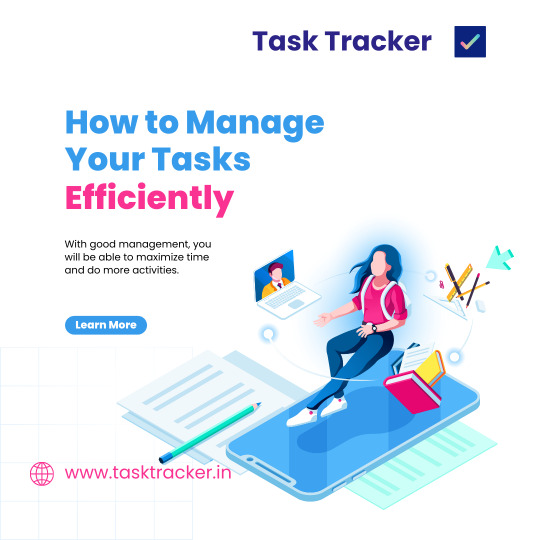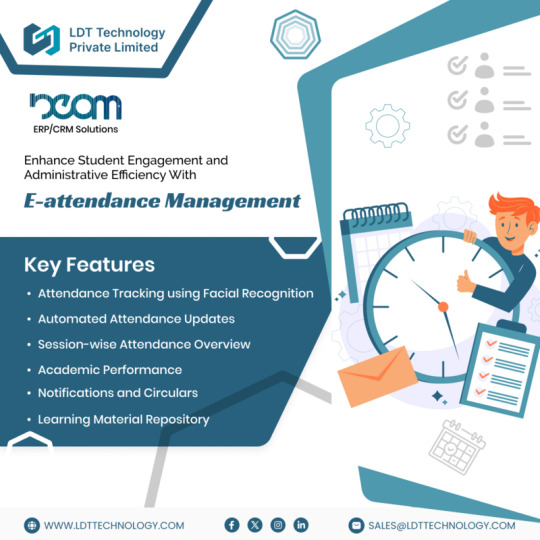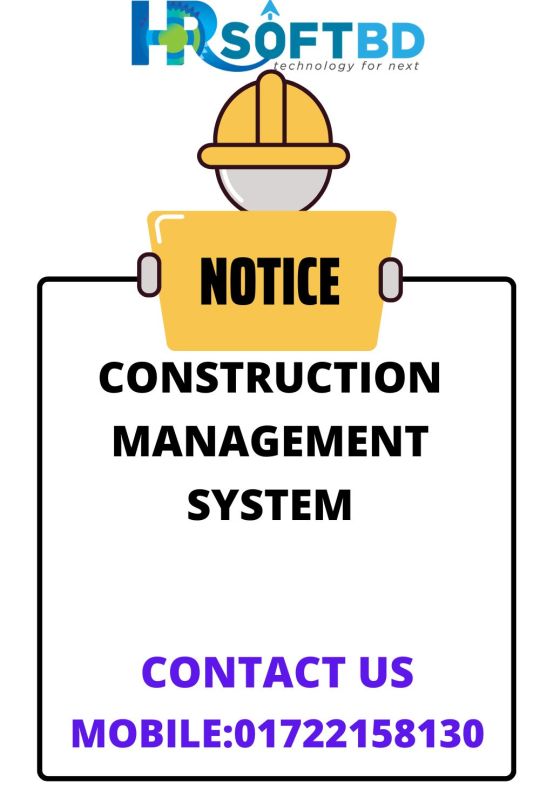#time attendance system software
Text
#clocking in device#electronic timesheets#employee management system#employee scheduling app#online rostering software#online time and attendance#rostering software#staff management system#time and attendance software#workforce management
2 notes
·
View notes
Text

Fee Management Software by Cyber School Manager: Simplify Your Finances
#fee management software#school management mobile app with complete erp#best school time table software#best integrated school management software#school attendance software#school management system#best school erp software#school management software#top student management system#admissions management software#payroll manager software
0 notes
Text

Optimize productivity with effective task management. Streamline workflows, prioritize tasks, and track progress seamlessly. Improve team collaboration and meet deadlines efficiently with a robust task management system.
#task management software#task tracker#online attendance#online task manager#online time tracker#task management tools#time tracker#productivity#tracking task#task management system
0 notes
Text
In today's fast-paced business environment, efficient and accurate workforce management is essential. KyteHR introduces an innovative solution to streamline attendance tracking with its advanced selfie-based attendance system. This cutting-edge technology not only simplifies the attendance process but also ensures higher accuracy and security, transforming the way businesses handle their human resources.
Why Choose KyteHR's Selfie-Based Attendance System?
KyteHR's selfie-based attendance system leverages the power of facial recognition technology to provide a seamless and reliable method for clocking in and out. Here are the key features and benefits that make KyteHR the ideal choice for businesses:
1. Accurate and Fraud-Proof Attendance Tracking
Traditional attendance systems are prone to errors and fraudulent activities, such as buddy punching. KyteHR's selfie-based system eliminates these issues by verifying each employee's identity through facial recognition. This ensures that only the authorized personnel can mark their attendance, providing accurate and fraud-proof records.
2. Easy Integration and User-Friendly Interface
KyteHR's attendance system is designed for easy integration with existing HR and payroll software. The user-friendly interface ensures that employees can quickly adapt to the new system without any hassle. With just a simple selfie, employees can mark their attendance, making the process quick and convenient.
3. Real-Time Data and Analytics
The selfie-based attendance system provides real-time data on employee attendance, allowing managers to monitor and analyze workforce trends and patterns. This data is crucial for making informed decisions regarding scheduling, productivity, and overall workforce management.
4. Enhanced Security and Privacy
KyteHR prioritizes the security and privacy of employee data. The selfie-based system uses advanced encryption methods to protect sensitive information. Facial recognition data is stored securely, ensuring that employee privacy is maintained at all times.
5. Cost-Effective Solution
Implementing KyteHR's selfie-based attendance system can significantly reduce the costs associated with traditional attendance tracking methods. The automated system minimizes the need for manual data entry and reduces administrative overhead, leading to substantial cost savings for businesses.
6. Remote Attendance Capability
With the rise of remote work, KyteHR's selfie-based attendance system offers a perfect solution for tracking the attendance of remote employees. Regardless of their location, employees can easily mark their attendance using their smartphones, ensuring that businesses can maintain accurate records even with a distributed workforce.
Transform Your Workforce Management with KyteHR
KyteHR's selfie-based attendance system is a game-changer for businesses looking to enhance their workforce management practices. By providing a reliable, secure, and user-friendly solution, KyteHR helps organizations achieve higher efficiency, accuracy, and cost savings. Embrace the future of attendance tracking with KyteHR and experience the benefits of a modern, technology-driven approach to workforce management.
READ MORE...Free Attendance Tracking System for Employee Employee Attendance App Management App KyteHR
0 notes
Text
Mastering Success: The Essentials of Training Management

In today's fast-paced business landscape, the success of an organization often hinges on the knowledge, skills, and capabilities of its workforce. Training management plays a pivotal role in ensuring that employees are equipped with the tools and resources they need to thrive in their roles and contribute to the organization's success. From onboarding new hires to providing ongoing professional development, effective training management is essential for maximizing employee performance and driving organizational growth.
At its core, training management involves the planning, coordination, and execution of training programs aimed at enhancing employee knowledge, skills, and competencies. Whether it's technical skills training, leadership development, or compliance training, the goal is to empower employees to perform their roles effectively and adapt to changing business needs.
One of the key aspects of training management is aligning training initiatives with organizational goals and objectives. By identifying key performance indicators and skill gaps, training managers can develop targeted training programs that address specific needs and priorities. This strategic approach ensures that training investments are aligned with business objectives and contribute to overall organizational success.
Moreover, effective training management involves selecting the right training methods and delivery mechanisms to maximize learning outcomes. From traditional classroom-based training to e-learning platforms and virtual instructor-led sessions, there are various options available to suit different learning styles and preferences. By leveraging a blend of training modalities, training managers can create engaging and interactive learning experiences that resonate with employees and drive knowledge retention.
Another essential aspect of training management is evaluating the effectiveness of training programs and measuring their impact on employee performance. Through pre-and post-training assessments, feedback surveys, and performance metrics, training managers can assess the effectiveness of training initiatives and identify areas for improvement. This data-driven approach enables organizations to continuously refine their training strategies and ensure that training investments yield tangible results.
Furthermore, training management involves fostering a culture of continuous learning and development within the organization. By promoting a growth mindset and providing opportunities for skill development and career advancement, organizations can attract and retain top talent and stay ahead of the competition. Training managers play a crucial role in championing lifelong learning and creating a supportive environment where employees feel empowered to grow and succeed.
In conclusion, training management is a cornerstone of organizational success, driving employee performance, and fostering a culture of continuous improvement. By aligning training initiatives with business objectives, leveraging effective training methods, measuring training effectiveness, and promoting a culture of continuous learning, organizations can unlock the full potential of their workforce and achieve sustainable growth. With strategic training management in place, organizations can adapt to evolving market dynamics, navigate challenges, and seize opportunities for success.
#payroll management#leave management system#hr management#contract management#time and attendance sofytware#leave management software
0 notes
Text
Top Features of Attendance Management System in Companies
Implementing an attendance management system offers amazing company benefits, including reduced cost, improved productivity and even streamlined attendance tracking. With many features and advanced capabilities, companies can effectively manage attendance and enhance operational efficiency, fostering a positive work environment.
As we know, attendance management systems are invaluable tools for today's HR professionals; therefore, automating the manual processes and providing clear insights can save time and a lot of effort. Today, in our blog, we will explore the top features of the attendance management system and how they can help HR professionals.
Attendance Management System
A cloud-based HR software system offers the superior benefits of flexibility, cost-optimization, and the liberty to access it across various platforms. For the same reason, modern tech-savvy organizations are in high demand for cloud HRMS software features.
Productivity
Productivity is the key HR responsibility. Therefore, if your HR team spends hours responding to emails, messages, or voicemails to track and record attendance details, they are wasting valuable time that could be utilized somewhere else. If they spend their valuable hours doing tasks that can be replaced with an effective attendance management system, you should opt for it.
Clocking in and out
One of the essential features of the attendance management system is clocking in and out. Your employees can easily schedule punch-in and break times and then clock out. It can be done either through biometrics or mobile apps on their phones.
Leave Management
The attendance management system also covers this feature. A missed day at work should automatically be registered as an absence.
Payroll Integration
If you have payroll integration with the attendance management system, then compensation can be calculated based on the time the system records while reconciling the leaves. A diversified system will not just calculate the daily payroll in your organization but also support hourly compensation and flexible payments.
Automated Communication
Attendance management systems should be able to access control devices and time attendance regularly without manual intervention. The devices can be located in different geographical locations, and the system should be well-equipped to communicate effectively.
Notifications
Every company must have a system that gives them regular updates and notifications on important events. The cloud HRMS software attendance system should have the option of notifying users of important updates. For example- when an employee has clocked in during the later hours, the system sends a notification to the superior notifying them of the same. Automated alerts will help inform about these anomalies to the managers and superiors requesting immediate action.
Calendar Integration
An ideal attendance management system should be able to sync with digital calendars like Outlook, Google, and more. It will help everyone on your team know when you are available and when you are not. These systems are especially useful for remote teams, where you can check a person's attendance while simply checking the shared calendar.
Advanced Analytics
A smart attendance management system should be powered with advanced analytics that offer granular visibility into the attendance pattern of a specific employee, thereby giving you a clear idea of those putting in extra hours. Such practice can help differentiate productive employees from nonproductive ones with accurate attendance reports.
With this, we conclude the features you should look for in a cloud HR and payroll software offering an attendance management system. It helps organizations provide accurate report data, thereby helping them make the cost effective decisions to optimize the workforce and determine best practices that can be followed.
Using a digital attendance management system that helps automate data using advanced software eliminates chances of human error or duplication. If you are looking for an effective attendance management system, look no further than Yiron Technologies. Our advanced HR and payroll software helps you manage your employees, simplifies the HR operations and builds a performing workforce while putting the employee experience first.
#cloud based hr software#time and attendance systems#hr and payroll software#attendance management system
0 notes
Text
Centralise Attendance in One Platform

Do you find it complex to manage attendance manually? LDT Technology’s attendance tracking software is here to make operations easier for your institution. Your students can mark their attendance using facial recognition technology. Furthermore, it provides live updates and notifications related to the latest events, including parent-teacher meetings, exam schedules, and other announcements.
0 notes
Text
Best Time and Attendance Systems for Small Businesses
Time and Attendance software is commonly worked with in the cloud, making it accessible to different people and chiefs considering approvals. The cloud furthermore makes it more sensible for private endeavours that come up short on time and cash to stay aware of the item on their frameworks. The software can make customized reports considering the overall huge number of moving toward data that you and your staff give. It isn't "dead" data locked away in reports, envelopes, or old PC systems.
0 notes
Text
0 notes
Text
The Future of Leave & Attendance Management System
#leave management system#time attendance software with sms#attendance management system#attendance system
0 notes
Text
Contractor Management System By HRsoft BD
http://hrsoftbd.com/service-details/contractor-management-system

#online education#ballot counting software#coaching management software#contrctor management software#Vehicle Fleet Management Software#Time Attendance Software With SMS#Dynamic Website#Graphic Design#E-Education System#Online News Portal#E-Commerce Development#Ballot Counting Software#Advocate Diary Management System#Account Software For Hajj#Accounting Software#Dairy Farm Software#2#Courier Management Software Solutions#Contractor Management System#Employee / Human Resource Management System#EMIS (School Software)E-Commerce Solution#E-Class Web Application and Mobile App#Digital Education Management System#Digital Law Farm Web Application#EMIS (School Software)#E-Commerce Solution#Hotel Management Software#Hospital Management Software#Finger print and face detection#Event Management Software
1 note
·
View note
Text
Meet Cyber School Manager - advanced school management software for seamless administration and utmost efficiency. Providing effective school administration tools, Cyber School Manager simplifies attendance tracking, grade management, and communication tools to timetable scheduling—all the daily operations for educators and administrators. Managing your school has never been easier with this user-friendly interface and all its extensive features. Enjoy smooth integration, powerful data security, and unmatched support with Cyber School Manager. Transform your school's management today!
#school management software#school management system#admissions management software#fee management software#best school time table software#school management mobile app with complete erp#best school erp software#best integrated school management software#top student management system#school attendance software#payroll manager software
0 notes
Text
#Payroll Management System#Human Capital Management Software#Time & Attendance Software#Leave Management Software
1 note
·
View note
Text
#task tracker#online attendance#online task manager#tracking task#task management software#online time tracker#productivity#task management system#time tracker#task management tools
0 notes
Text
#clocking in device#electronic timesheets#employee management system#employee scheduling app#online rostering software#online time and attendance#rostering software#staff management system#time and attendance software#workforce management
0 notes
Text
Streamlining Success: The Art of Contract Labour Management

In today's dynamic business landscape, many organizations rely on contract labor to flexibly meet their staffing needs, scale operations, and access specialized skills. However, managing contract labor effectively presents unique challenges and requires a strategic approach to ensure compliance, mitigate risks, and optimize resource allocation. Contract labour management plays a crucial role in maximizing the value derived from contract workers while maintaining regulatory compliance and upholding ethical labor practices.
At its essence, contract labour management involves the end-to-end oversight of all aspects related to the engagement, utilization, and administration of contract workers. From recruitment and onboarding to performance management and offboarding, effective contract labour management requires careful planning, clear communication, and robust processes.
One of the primary objectives of contract labour management is ensuring compliance with applicable labor laws, regulations, and industry standards. Contract workers may be subject to different legal requirements and entitlements compared to permanent employees, necessitating thorough understanding and adherence to relevant legislation such as employment contracts, wage and hour regulations, health and safety standards, and taxation laws.
Moreover, contract labour management involves establishing transparent and equitable terms of engagement for contract workers, including compensation, benefits, and working conditions. Clear communication of expectations, rights, and responsibilities helps foster positive relationships between contract workers and their employers, promoting mutual trust and respect.
Another critical aspect of contract labour management is optimizing resource allocation and workforce planning. By strategically assessing staffing needs, identifying skill gaps, and leveraging contract labor to supplement existing workforce capacity, organizations can enhance operational efficiency, flexibility, and agility. Contract labour management enables organizations to scale their workforce up or down in response to changing market demands, project requirements, and business objectives.
Furthermore, effective contract labour management encompasses performance monitoring and evaluation to ensure that contract workers meet quality standards and deliver results in line with organizational expectations. Regular performance reviews, feedback sessions, and key performance indicators (KPIs) enable organizations to assess the effectiveness of contract labor arrangements and make informed decisions regarding contract renewal, extension, or termination.
In addition to compliance and performance management, contract labour management involves mitigating risks associated with contract worker engagement, such as legal liabilities, worker misclassification, and contingent workforce management challenges. Proactive risk assessment, contract vetting, and implementation of robust contract management processes help minimize potential risks and safeguard the interests of both employers and contract workers.
In conclusion, effective contract labour management is essential for organizations to optimize workforce utilization, maintain compliance, and mitigate risks associated with contract worker engagement. By adopting a strategic approach to contract labour management and implementing robust processes for recruitment, onboarding, performance management, and compliance, organizations can unlock the full potential of their contract workforce and drive sustainable business success. With contract labour management practices in place, organizations can navigate the complexities of contingent workforce management with confidence and achieve their strategic objectives.
#payroll management#leave management system#hr management#time and attendance sofytware#contract management#leave management software
0 notes